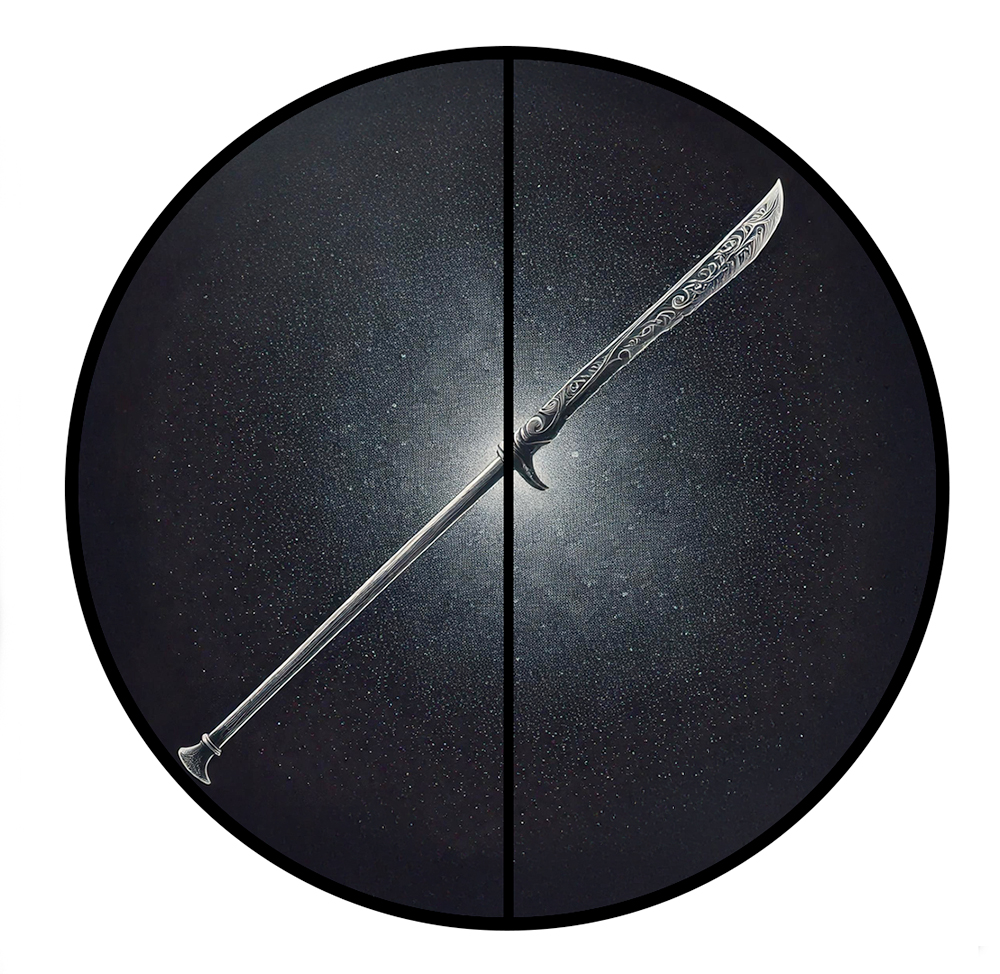 Revelation 1:16
Revelation 1:16

|
Strongs 2532
[list] Λογεῖον Perseus kai καὶ and Conj |
|
Strongs 2192
[list] Λογεῖον Perseus echōn ἔχων he who is having V-PPA-NMS |
|
Strongs 1722
[list] Λογεῖον Perseus en ἐν within Prep |
|
Strongs 3588
[list] Λογεῖον Perseus tē τῇ the Art-DFS |
|
Strongs 1188
[list] Λογεῖον Perseus dexia δεξιᾷ right Adj-DFS |
|
Strongs 5495
[list] Λογεῖον Perseus cheiri χειρὶ hand N-DFS |
|
Strongs 846
[list] Λογεῖον Perseus autou αὐτοῦ himself PPro-GM3S |
|
Strongs 792
[list] Λογεῖον Perseus asteras ἀστέρας stars N-AMP |
|
Strongs 2033
[list] Λογεῖον Perseus hepta ἑπτά seven Adj-AMP |
|
Strongs 2532
[list] Λογεῖον Perseus kai καὶ and Conj |
|
Strongs 1537
[list] Λογεῖον Perseus ek ἐκ from out Prep |
|
Strongs 3588
[list] Λογεῖον Perseus tou τοῦ the Art-GNS |
|
Strongs 4750
[list] Λογεῖον Perseus stomatos στόματος mouth N-GNS |
|
Strongs 846
[list] Λογεῖον Perseus autou αὐτοῦ himself PPro-GM3S |
|
Strongs 4501
[list] Λογεῖον Perseus rhomphaia ῥομφαία large broad sword N-NFS |
|
Strongs 1366
[list] Λογεῖον Perseus distomos δίστομος two-edged Adj-NFS |
|
Strongs 3691
[list] Λογεῖον Perseus oxeia ὀξεῖα sharp Adj-NFS |
|
Strongs 1607
[list] Λογεῖον Perseus ekporeuomenē ἐκπορευομένη she who is leading out V-PPM/P-NFS |
|
Strongs 2532
[list] Λογεῖον Perseus kai καὶ and Conj |
|
Strongs 3588
[list] Λογεῖον Perseus hē ἡ the Art-NFS |
|
Strongs 3799
[list] Λογεῖον Perseus opsis ὄψις face N-NFS |
|
Strongs 846
[list] Λογεῖον Perseus autou αὐτοῦ himself PPro-GM3S |
|
Strongs 5613
[list] Λογεῖον Perseus hōs ὡς just like Adv |
|
Strongs 3588
[list] Λογεῖον Perseus ho ὁ the Art-NMS |
|
Strongs 2246
[list] Λογεῖον Perseus hēlios ἥλιος sun N-NMS |
|
Strongs 5316
[list] Λογεῖον Perseus phainei φαίνει bringing to light V-PIA-3S |
|
Strongs 1722
[list] Λογεῖον Perseus en ἐν within Prep |
|
Strongs 3588
[list] Λογεῖον Perseus tē τῇ the Art-DFS |
|
Strongs 1411
[list] Λογεῖον Perseus dynamei δυνάμει full strength N-DFS |
|
Strongs 846
[list] Λογεῖον Perseus autou αὐτοῦ himself PPro-GM3S |

...the Hairs of Himself
...the Face of Himself
...the Voice of Himself
...the Eyes of Himself
...the Double-Mouthed Dagger of Himself

A large, spear or sword used by the Thracians, often described as a heavy and formidable weapon. It was characterized by its substantial size and width, making it particularly effective in close combat. Examples of its use include its depiction in historical accounts, such as in Plutarch's Aemilius (18) and Phylarchus' fragments (57 J.), where it is described as a "heavy, iron sword" wielded with both hands.
And having in his right hand seven stars: and going out of his mouth a sharp two-mouthed sword: and his sight as the sun shines in his power.
and having in His right hand seven stars; and a sharp, two-edged sword proceeding out of His mouth, and His face shining as the sun in its power.
In his right hand he held seven stars, from his mouth came a sharp two-edged sword, and his face was like the sun shining in full strength.
Footnotes
| 4 | The ῥομφαία rhomphaia was originally a "spear" and later a long, curved "sword." Historical accounts and linguistic sources show that it originally functioned as polearm. Rich’s Dictionary of Antiquities describes it as having a wooden shaft of the same dimensions as the iron head, similar to the Roman pilum (javelin). Hesychius lists ῥομφαία as μάχαιρα, ξίφος, ἤ ἀκόντιον μακρόν, indicating it could be a sword, long blade, or even a javelin-like weapon. Additionally, the Dacian falx, a similar weapon, had long-handled variants used with two hands, further supporting the idea that some ῥομφαίαι were polearm-like. Roman military adaptations against Thracian and Dacian warriors—such as reinforcing helmets—suggest that these weapons had enough length and impact force to be effective in breaking shields and armor, a characteristic of polearms and long two-handed weapons. |